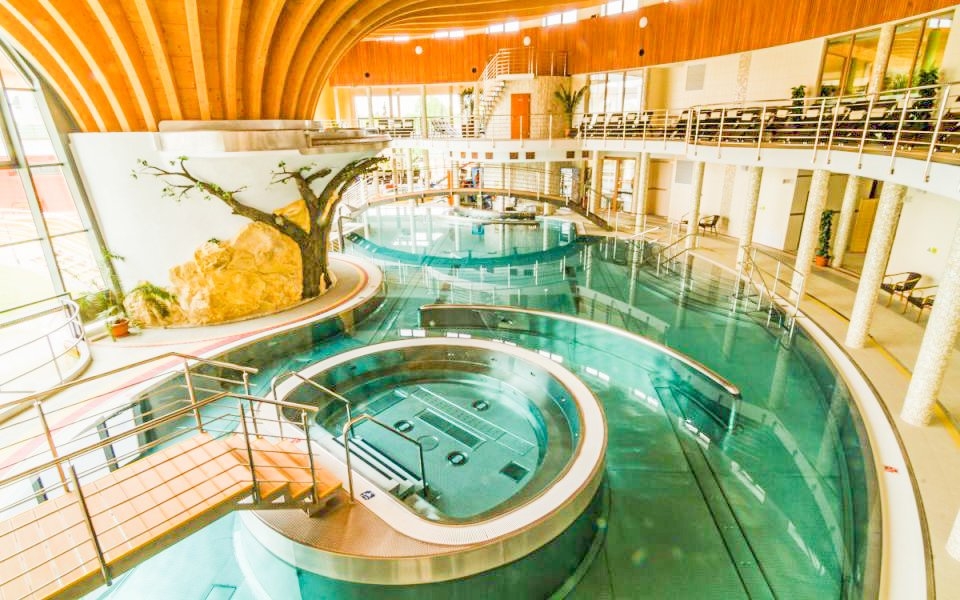From unsuccessful exploration to geothermal oasis – Podhájske baths in Slovakia
While not being successful in exploration for oil back in the 1960s, the wells drilled then actually turned out to change the village of Podhájske in Slovakia. Finding geothermal water then, was the foundation for a large thermal spa park and greenhouses.
An article shared on the website of GeoERA, a research programme under EU Horizon 2020 ERA-NET funding, provides the great sotry of Podhájske in Slovakia and “how an unsuccessful exploration well become a geothermal oasis” and the development of the Podhájske baths in the country. The village Podhajska is situated approximately 90 km east of Bratislava in northeast part of Danube basin. The Podhájske Thermal Park features 10 pools with water temperature between 26 and 38°C. The well also provides heat to greenhouses nearby, growing flowers and tomatoes.
While Podhájske is today one of the most known and best developed thermal baths of Slovakia, the origin is maybe a bit surprising.
In the 1960s, an exploration project was targeting hydrocarbon deposits and four wells were drilled all to a depth of 1,335 to 1,601m. Looking for Miocene bituminose shale deposits and no availability of seismic profiles, drillers found geothermal water of seawater origin.
The original wells were though not suitable for geothermal purposes, a new well was drilled in 1973, so the article. Podhájska-1 well reached a depth of 1,900m with a yield of 45-53 l/s and 81°C temperature. Thereafter, thermal baths and greenhouses were built. The used and cooled water was then actually released to the stream.
Since the original wells were not suitable for geothermal purposes, a new well was projected and drilled in 1973, the Podhájska-1 (or simply Po-1). The well reached 1900 m depth with yield between 45-53 l/s and 81°C temperature. Soon the building of the thermal baths and greenhouses begun. However, the used and cooled water was released into a creek, which had a negative impact on the environment.
The maximum flow-rate of the water is today around 45 l/s, but is on average exploited at approximately 20 l/s. Temperature of the geothermal water is 82°C and has a utilizable heat potential of 12.6 MW thermal.
At the same time, the pressure of geothermal water in the well had decreasing tendency. To avoid such negative impacts, reinjection well GRP-1 was drilled in 1986, 2 km northeast of well Po-1. Long term reinjection test was carried out with positive results. Since 1996, whole amount of exploited geothermal water is after cooling down to 45°C being reinjected via well GPR-1 into the ground. So far, it is the only implemented project in Slovakia, where the exploited geothermal water is reinjected back to the Earth’s crust. (so SlovGeoterm)
Source: GeoERA, SlovGeoterm


















